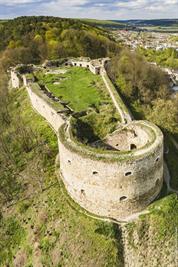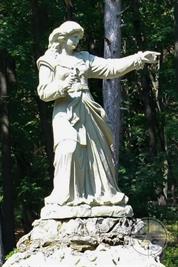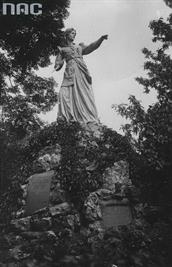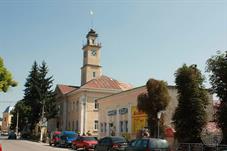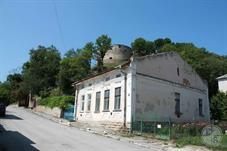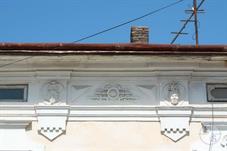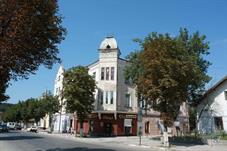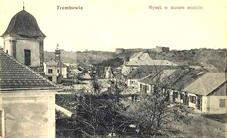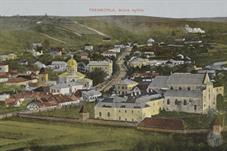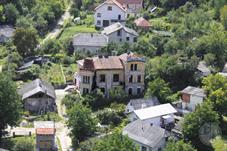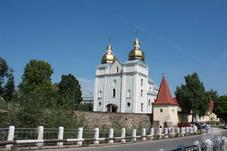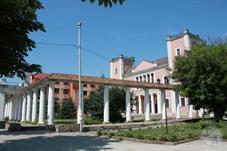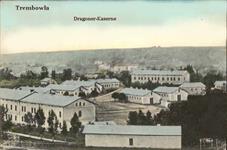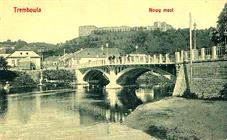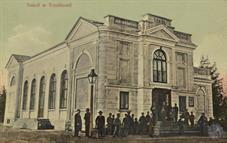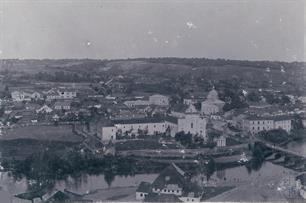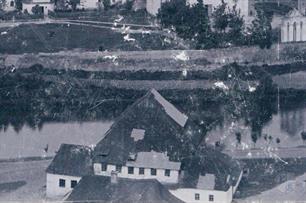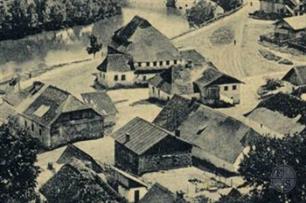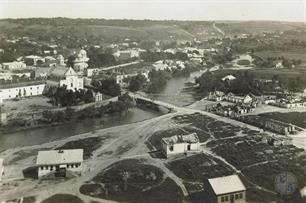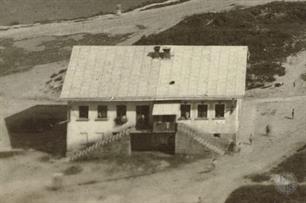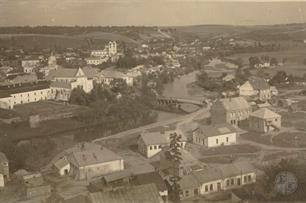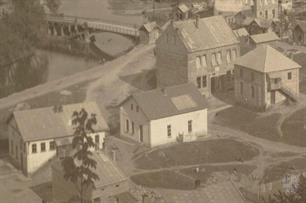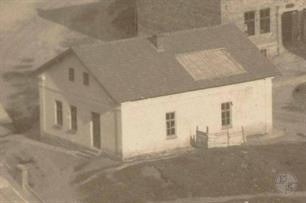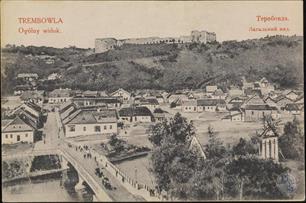Terebovlia
Ternopil district, Ternopil region
Sources:
- Pinkas Hakehillot Polin: Encyclopedia of Jewish Communities, Poland, Volume II, published by Yad Vashem, Jerusalem
- Jewish encyclopedia of Brockhaus & Efron
- Russian Jewish encyclopedia
Photo:
- Eugene Shnaider
- Tetiana Fedoriv
- Ukrainian Architectural Landmarks. Heritage of Terebovly
- FB Society Synagogues of Ukraine
- Albin Friedrich, Biblioteka Narodowa Polona. Trembowla
- Pinkas Hakehillot Polin: Encyclopedia of Jewish Communities, Poland, Volume II, published by Yad Vashem, Jerusalem
- Jewish encyclopedia of Brockhaus & Efron
- Russian Jewish encyclopedia
Photo:
- Eugene Shnaider
- Tetiana Fedoriv
- Ukrainian Architectural Landmarks. Heritage of Terebovly
- FB Society Synagogues of Ukraine
- Albin Friedrich, Biblioteka Narodowa Polona. Trembowla
Terebovlia (pl. Trembowla, ukr. Теребовля), the town in Ternopil region. In the 19th - early 20th centuries - in the province of Galicia in Austria-Hungary. In 1919–39 - as part of Poland, in 1939–91 - the Ukrainian SSR.
The first mention of the city dates back to 1097 in the Tale of Bygone Years, which makes it one of the oldest cities in Ukraine. Terebovlya is the ancient capital of the Terebovlya principality.
The first mention of the city dates back to 1097 in the Tale of Bygone Years, which makes it one of the oldest cities in Ukraine. Terebovlya is the ancient capital of the Terebovlya principality.
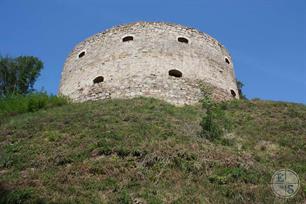 |
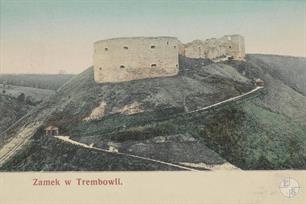 |
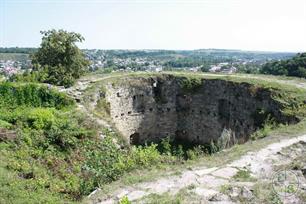 |
| Castle of Terebovlia | ||
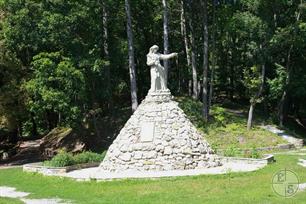 |
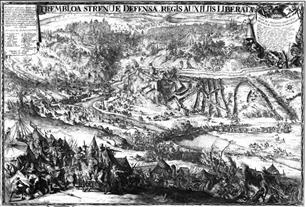 |
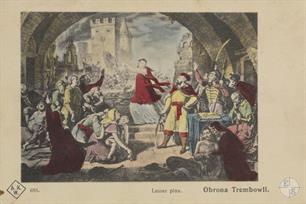 |
| Sophia Khshanovska, played a decisive role in the defense of Terebovlya from the Turks in 1675 | Engraving "Battle of Terebovlya" | Aleksander Lesser, "Defense of Trembowla", 1864 |
One of the city lustrations dates back to 1572, in which one can find confirmation that a Jewish community already existed in the city in the 16th century. The lustration indicates that there were 248 houses in the city, 2 priests and 10 Jews.
According to the lustration of 1616, there were 8 Jewish households in the city. It is also known that in the XVII century. there was a wooden synagogue in the city. A hundred years later (1765) the Jewish community was much larger - 89 households.
In the 19th century there were at least 2 synagogues in the city, including one old wooden one. The Jewish community predominantly lived in the Old City. Also in the city there was a separate Jewish cemetery, which stood on the site of a modern residential building.
Terebovlia was an important center of Hasidism and Jewish education - Haskala. The Hasidic dynasty of Terebovli is called Turkel.
During the First World War, the Jewish quarter burned down because there were many wooden buildings. Some of the Jewish families left the city as refugees before the advance of the Russian army.
According to the lustration of 1616, there were 8 Jewish households in the city. It is also known that in the XVII century. there was a wooden synagogue in the city. A hundred years later (1765) the Jewish community was much larger - 89 households.
In the 19th century there were at least 2 synagogues in the city, including one old wooden one. The Jewish community predominantly lived in the Old City. Also in the city there was a separate Jewish cemetery, which stood on the site of a modern residential building.
Terebovlia was an important center of Hasidism and Jewish education - Haskala. The Hasidic dynasty of Terebovli is called Turkel.
During the First World War, the Jewish quarter burned down because there were many wooden buildings. Some of the Jewish families left the city as refugees before the advance of the Russian army.
As of mid-1941, about 1,700 Jews lived in Terebovlya. In November 1942, Jews were resettled in the city from the surrounding villages and two cities - Strusiv and Budaniv.
On November 5, 1942, 1091 people were taken to the Belzec death camp, and 109 were shot in the city itself.
On December 1, 1942, the Terebovlya ghetto was created. At that time there were about 2500 people in it.
In 1943 the ghetto was liquidated. The German gendarmerie, with the help of the Ukrainian police, carried out three mass executions of Jews near the village of Plebanivka:
on April 7, 1943, about 1,100 people were shot;
on June 3, 1943, 845 people were shot;
on June 5, 1943, the last 350 inhabitants of the ghetto were shot.
Only a few dozen residents of the ghetto managed to escape and survive.
The ghetto housed two city schools. Prior to the destruction of the ghetto, the children of Polish and Ukrainian families were warned not to come to the lessons.
On November 5, 1942, 1091 people were taken to the Belzec death camp, and 109 were shot in the city itself.
On December 1, 1942, the Terebovlya ghetto was created. At that time there were about 2500 people in it.
In 1943 the ghetto was liquidated. The German gendarmerie, with the help of the Ukrainian police, carried out three mass executions of Jews near the village of Plebanivka:
on April 7, 1943, about 1,100 people were shot;
on June 3, 1943, 845 people were shot;
on June 5, 1943, the last 350 inhabitants of the ghetto were shot.
Only a few dozen residents of the ghetto managed to escape and survive.
The ghetto housed two city schools. Prior to the destruction of the ghetto, the children of Polish and Ukrainian families were warned not to come to the lessons.
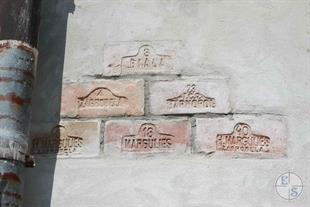 |
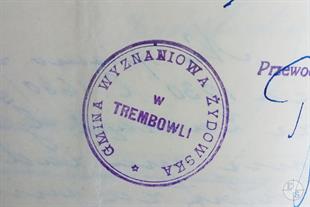 |
| Brick with a stigma of the Jewish manufacturer Margulis, in the wall of the castle | Archive document with the seal of the Jewish community of Terebovlia |
There was a Jewish section on the bank of the Gniezna River, where at different times several synagogues and kloises were located:
- The Great Synagogue and Beit Midrash burned down during a fire in 1910;
- Beit Midrash and Alter Kloiz (Old Kloiz) in the same building. Probably built at the end of the 19th century, destroyed during the Second World War;
- Synagogue of artisans "Yad Harutsim" ("Hand of the Agile"), after the 1950s the building was completely rebuilt;
- Kopychinitser kloyz (kloyz of Kopychin Hasidim), destroyed during World War II;
- Husyatiner kloiz (kloiz of followers of R. Mordechai Shraga Friedman from Husiatyn, son of the Ruzhin's Rebe), destroyed during the Second World War.
The Yad Kharucim synagogue, the Kopychin's and Husiatyn's kloyses were built, apparently, in the 1920s, because these buildings are not shown in the 1917 photograph.
- The Great Synagogue and Beit Midrash burned down during a fire in 1910;
- Beit Midrash and Alter Kloiz (Old Kloiz) in the same building. Probably built at the end of the 19th century, destroyed during the Second World War;
- Synagogue of artisans "Yad Harutsim" ("Hand of the Agile"), after the 1950s the building was completely rebuilt;
- Kopychinitser kloyz (kloyz of Kopychin Hasidim), destroyed during World War II;
- Husyatiner kloiz (kloiz of followers of R. Mordechai Shraga Friedman from Husiatyn, son of the Ruzhin's Rebe), destroyed during the Second World War.
The Yad Kharucim synagogue, the Kopychin's and Husiatyn's kloyses were built, apparently, in the 1920s, because these buildings are not shown in the 1917 photograph.

- Home
- Shtetls
- Vinnytsia region
- Volyn region
- Dnipro region
- Donetsk region
- Zhytomyr region
- Zakarpattia region
- Zaporizhzhia region
- Ivano-Frankivsk region
- Kyiv region
- Kropyvnytskyi region
- Luhansk region
- Lviv region
- Mykolayiv region
- Odessa region
- Poltava region
- Rivne region
- Sumy region
- Ternopil region
- Kharkiv region
- Kherson region
- Khmelnytskyi region
- Chernihiv region
- Chernivtsi region
- Cherkasy region
- Crimea
- Synagogues
- Cemeteries
- Objects & guides
- Gallery
- History
- Contact
Jewish towns of Ukraine
Jewish towns of Ukraine
My shtetl
My shtetl
Donate
